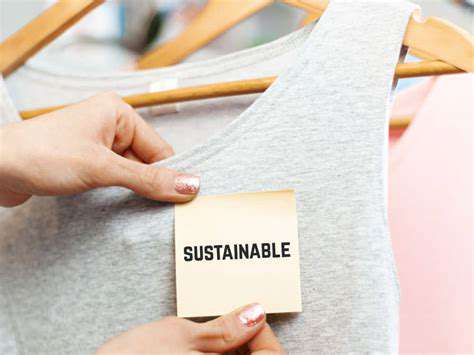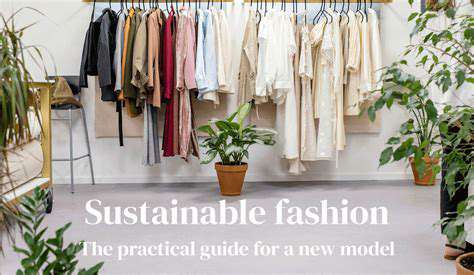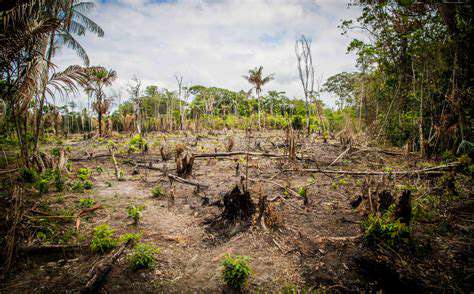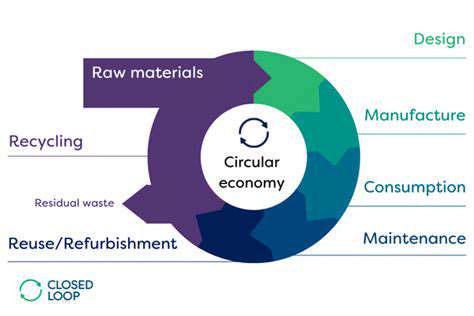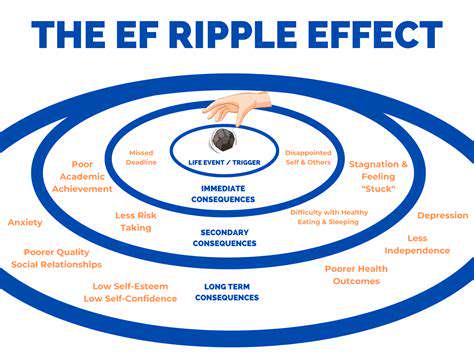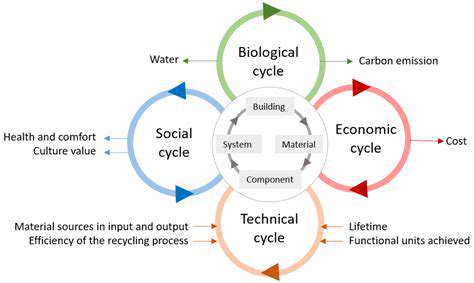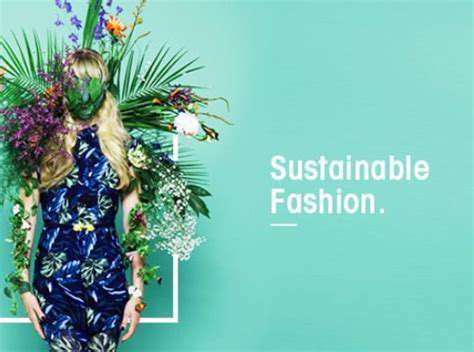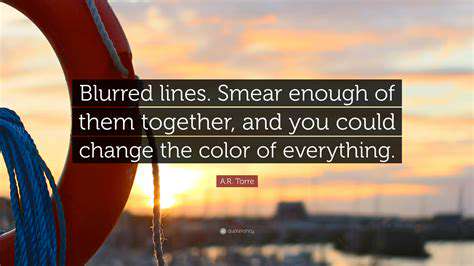From Linear Production to Regenerative Systems in Fashion
The Foundations of Linear Fashion
For generations, the fashion industry has relied on a linear model that's become increasingly problematic. This system follows a straightforward but damaging pattern: take resources, make clothes, sell them, and throw them away. While this approach might seem efficient at first glance, it's creating massive environmental problems that can't be ignored. We're seeing unprecedented levels of resource depletion, pollution, and waste because of this outdated system.
What makes this model particularly troubling is its dependence on easily accessible resources without considering future consequences. The constant push for new styles and collections drives a destructive cycle where we extract, produce, and discard at an alarming rate - all while putting short-term profits ahead of our planet's long-term health.
The Environmental Toll
Our current fashion system is wreaking havoc on the environment in multiple ways. The dyeing and finishing processes alone contaminate water supplies, while mountains of discarded clothing overflow landfills worldwide. The environmental price we're paying for cheap, disposable fashion is simply too high to sustain. This isn't just about pollution - it's actively accelerating climate change through excessive resource use and carbon emissions.
Consider this shocking reality: each year, millions of perfectly wearable garments end up buried in landfills where they release harmful methane gas. This waste crisis serves as a wake-up call that we need to fundamentally rethink how we produce and consume clothing.
The Social Implications
The damage extends far beyond environmental concerns. Workers throughout the global supply chain, particularly in developing nations, often face exploitation to maintain this broken system. Low wages, unsafe conditions, and excessive hours have become the hidden cost of our clothing.
Compounding this problem is the lack of transparency in fashion supply chains. Most consumers have no idea about the human cost behind their bargain-priced garments, allowing unethical practices to continue unchecked. This systemic exploitation highlights how the linear model perpetuates global inequality.
The Economic Inefficiency
While the linear model appears cost-effective on the surface, it's actually creating massive economic vulnerabilities. Constant material extraction becomes more expensive as resources dwindle, waste disposal costs escalate, and consumers increasingly demand sustainable options.
The system's true costs - environmental cleanup, healthcare for affected workers and communities, climate change mitigation - aren't reflected in clothing prices. This accounting blind spot is creating an economic time bomb for the fashion industry.
The Rise of Fast Fashion
Fast fashion represents the linear model's most destructive manifestation. By encouraging consumers to treat clothing as disposable and constantly chasing the next trend, this approach has dramatically intensified the system's negative impacts. The result? More pollution, more waste, and more pressure on overtaxed ecosystems.
The Circular Economy as a Solution
Transitioning to a circular fashion model offers our best hope for a sustainable future. This approach emphasizes keeping materials in use through recycling, upcycling, and innovative design that eliminates waste from the start.
By redesigning how we create and use clothing, we can significantly reduce fashion's environmental footprint while creating new economic opportunities. This shift represents more than just better recycling - it's about fundamentally rethinking our relationship with clothing.
The Need for Innovation and Collaboration
Creating a sustainable fashion future requires unprecedented cooperation across the entire industry. Designers must rethink materials and production methods, manufacturers need to adopt cleaner processes, and retailers should educate consumers about responsible choices.
Investment in sustainable innovation is crucial, from developing new eco-friendly fabrics to creating business models that prioritize longevity over disposability. This transformation demands that we all take responsibility for fashion's future.
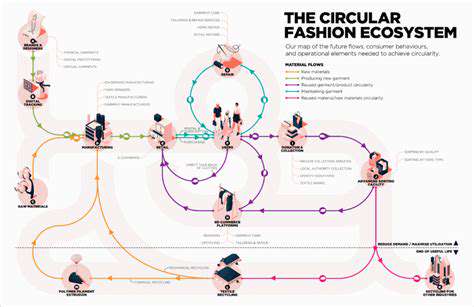
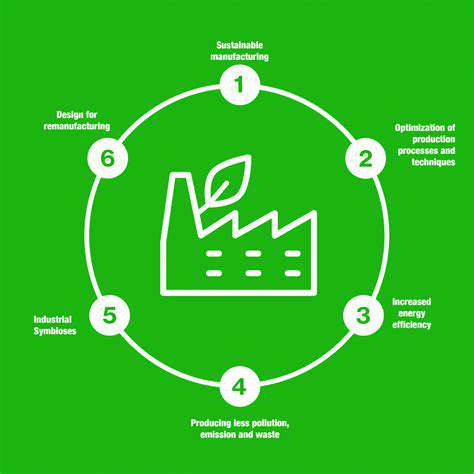
The Role of Consumers and Brands in the Transition
Consumer Responsibility in a Regenerative Future
Today's shoppers aren't just buyers - they're powerful change agents in the fashion ecosystem. Moving toward sustainability requires consumers to break old shopping habits and embrace mindful consumption. This means choosing quality over quantity, supporting ethical brands, and understanding how clothing choices affect the planet.
The most impactful consumers go beyond purchases to actively support sustainable initiatives. They engage with brands about their practices, advocate for better industry policies, and spread awareness about fashion's environmental impact. Through these actions, shoppers can drive real systemic change.
Brand Innovation for a Regenerative Economy
Fashion companies must evolve from mere product sellers to sustainability leaders. This transformation requires reinventing business models to prioritize environmental and social good alongside profits. Every stage - from material sourcing to store operations - needs reimagining with circular principles in mind.
Effective communication about sustainability efforts is equally important. Brands that transparently share their supply chain details and environmental impact build trust with conscious consumers. Authentic storytelling about sustainability initiatives can turn customers into passionate advocates.
Building a Regenerative Ecosystem: Collaboration and Community
Creating a sustainable fashion future demands cooperation across all sectors. Businesses, nonprofits, governments, and educational institutions must work together to develop and scale solutions. These partnerships can accelerate innovation in sustainable materials and production methods.
Developing strong community connections around sustainability helps maintain momentum for change. Local initiatives, educational programs, and transparent dialogues create networks of engaged citizens pushing for better practices. When communities unite around sustainability goals, they create powerful forces for change.
Policy makers play a critical role by creating regulations that reward sustainable practices and penalize harmful ones. Investments in green technology research and support for environmental restoration projects can create frameworks where sustainable fashion thrives.
Ultimately, the shift to circular fashion requires all stakeholders - brands, consumers, governments, and organizations - working in harmony. Only through this collective effort can we build a fashion industry that respects both people and planet.
